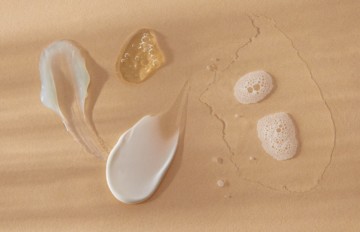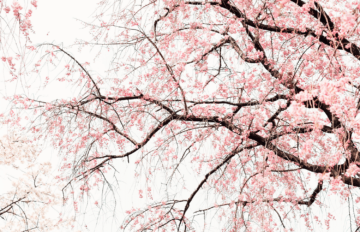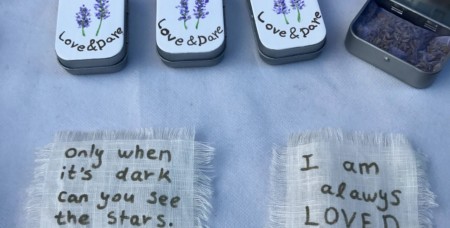
The Rendez-vous of Divinities : In the fragrant wake of Aphrodite or Venus
Spring opened with the Equinox of March and the sign of Aries, which is often seen as entering the season of renewal, of new life after the winter season, like the sprouting of plants and the blossoming of flowers.
Associated with the Warrior Feminine Archetype, in Alexandra Fryda Marty’s book Priestess-Woman @moonsistersparis, you can weave the threads of Athena, the Goddess of wisdom, diplomatic warfare and the patron saint of weavers, with those of Artemis, the fiery lunar goddess of the hunt and the forests, protector of newborns for both humans and animals, in love with Nature, which she cherishes and of which she is the guardian.
And in this round of the year, after having set its limits, and having trusted in this spring renewal to say yes to the opportunities that present themselves and to assume it with audacity, we arrive at the season of the “Lover “(Alexandra Fryda Marty’s Woman Priestess), the season “heart of spring” with the month of May, the month of the Roses, the month of the blossoming attached to the Earth that the sign of Taurus reminds us of, the month of the Goddess Aphrodite, or Venus in Latin, whose celebrations began among the Ancients as early as the month of April and continued until the threshold of June. So it’s time to take the time and enjoy the sweet and promising aromas of the bright and beautiful season.

It is not surprising to link the Warrior and the Huntress to the Lover: in fact, in Egyptian, Mesopotamian and Sumerian religions and cultures, we find Hathor, Inanna and Ishtar (Astarte) as primordial Goddesses with these multiple faces.
It is in this lineage, by cultural syncretism, when the primitive ancient peoples are in full expansion, that the Goddess Aphrodite is inscribed, which is woven of these previous cults, as the work Goddesses of perfume and metamorphosis of Isabelle Rieusset-Lemarié shows so well.
Greek Goddess of Beauty, Seduction, Love, and Fertility, called by the Romans Venus and whose consecrated day is Friday (Veneris Dies), Aphrodite would be born according to the version of Hesiod, in the Theogony of the Gods, of the foam of the sea [aphros] in Greek, given birth to by the drops of blood of Ouranos, castrated by his son Cronos, or Saturn.
Her oriental origin is not denied by her island of predilection, Paphos in Cyprus, where she is called Cypris and who is venerated in a famous temple of the island.
The island of Kythera is also often associated with it.
She is said to have had many amorous adventures: married to the God of the forge, Hephaestus, she cheated on him with the God of war, Mars, and the two lovers were caught and locked up in a golden net forged by Hephaestus himself, who thus imprisoned them and showed them to all the Divinities to make them the laughing stock of Olympus.
She is also the mother of Eros and Hermaphrodite with the messenger God Hermes.
The ancient mythology makes her fall madly in love with the beautiful Adonis, that we find under the name of Adon, lover of the Goddess Ishtar, in the Sumerian culture, legend that the Latin poet, Ovid, takes up in his Metamorphoses, by making Adonis be born of the sap of a tree, the myrrh tree, which possesses the etymological meaning of “to flow drop by drop, to distil” and which gives the Greek word Translated with www.DeepL.com/Translator (free version) [myrôn] which means perfume, and Adonis is the embodiment of perfume, coming from the tears of his mother “weeping with warm drops flowing from the tree” (Ovid).
The beauty of the young Adonis, don’t we say “to be beautiful like Adonis, or to be a beautiful Adonis”, is revealed as he grows and matures: as a child, he is entrusted by the Goddess Aphrodite to the Sovereign Goddess of the Underworld, Persephone, and soon the two Goddesses fight over the love of the beautiful young man. It is then decided that he will spend a third of the year with Aphrodite, another third with Persephone and the last third in his own freedom.
Adonis chooses to spend more time than expected with the Goddess of Love, which is seen as a betrayal of the divine pact.
Adonis will be punished by being mortally wounded by a boar charging at him and it is said, in this mythological episode, that from the last embrace between Adonis and Aphrodite would have been born the Rose, tinted with the blood flowing drop by drop from the wound of the young man and the tears of the Goddess. The legend even says that from the tears of Aphrodite would be born an anemone, “a flower of the wind”, like the tears of the Goddess, carried in the wind that blows in her long curly hair.
Adonis will remain famous and honored during the Festivals of Adonis, only reserved to the women: they lamented and wept the first day, devoted to the mourning, then, the second day, they planted in ground, in the joy, seeds which they sprinkled with hot water to activate the growth of the young plants, which, once taken out of ground, faded in the image of Adonis, mowed down in his youth by the death.
These planting areas were called “Les Jardins d’Adonis”.

Aphrodite is not only the sweet and sentimental Botticellian Venus who plays with her seduction, she can also reveal herself in more pronounced shadowy areas, such as vindictiveness or jealousy: this “Lover of laughter, this Mother of desire, this Goddess who turns hearts upside down” can turn out to be a “Weaver of tricks”: she punishes Psyche, who fell in love with Eros, by plotting the scenario of her loss because the beauty of the young woman is venerated by the locals to the point of neglecting the cult of Aphrodite. In the same way, the Goddess takes revenge on women who abandon her by afflicting them with a nauseating smell to the point that men flee from them.
Aphrodite is qualified by the epithet, the one who loves the deep dark night, intensely dark, she is associated with a “Slayer of men” or the “Lady of Funerals”.[Philopannux]
Like the Rose which is her main attribute, the Goddess knows how to use her thorns.
For all that, Aphrodite is in sculpture, in ceramics, in painting, one of the most borrowed ancient Goddesses, for the palette of emotions that she provides.
Aphrodite is honored in many places and often in connection with the sea, she is also the protector of sailors and has a strong relationship with water, as the mythological version of her birth, born of the foam of the waves, emphasizes.
The Goddess Aphrodite, or Venus, was much talked about in ancient times as well as today.
It can also be at the heart of the weaving between Antiquity and Modernity. The town of Port-Vendres in the Pyrenees-Orientales, near Collioure, offers a good example.
With a famous port since antiquity, the city, despite the tramontana which could be violent, offered a safe place to anchor during the commercial navigations that the Greeks made.
Etymologically, she is called “Portus Veneris”, the Port of Venus, and a temple was dedicated to her to favor maritime travel under the best auspices and to thank the Goddess for her benevolent protection.

Numerous statues of Venus or dedicated to femininity in all its beauty and sensuality dot the promenade of Banyuls, under the masterful chiseling of the sculptor Aristide Maillol who creates true odes to the feminine in his works, such as certain squares in Perpignan, with the statue of Venus with a necklace.
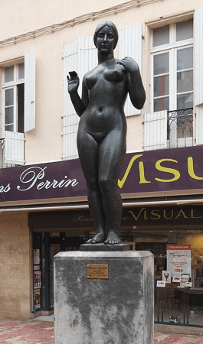
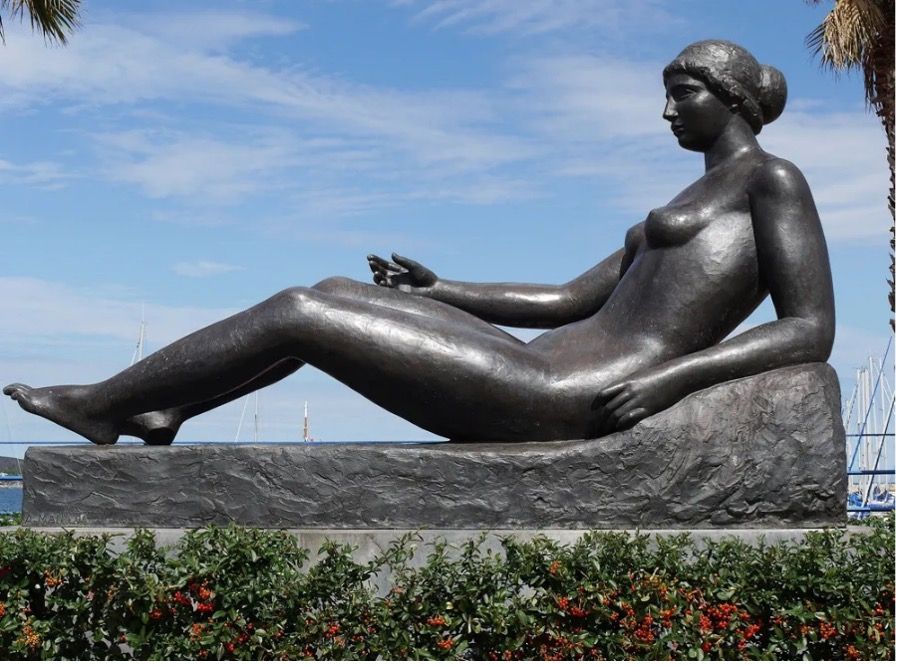
In Sparta, Aphrodite is a Warrior Goddess and Genetrix.
The Venus of Arles, in the Museum of Antiquity, reflects well this victorious Warrior, “dispenser of life and mother of fruits”, as the Latin poet-philosopher Lucretius wrote in De Natura rerum.

Venus was initially supposed to hold a sword.
Aphrodite is[pandémos], she is “to all the people” because she governs the gods, men, animals and all Nature, she has power over everything and everyone:
“It is to you that every living thing owes its conception and, once it has emerged from darkness, the light of the sun. (Lucretius)
Aphrodite is at the root of all birth, with Love at the heart of everything.
Venus, for the Romans, will be above all a green Goddess, a Goddess of gardens, fertility and fecundity.
The Rose is one of its favorite attributes: on the island of Samos the rose is cultivated in honor of the Goddess, declining its shades from pearly white to carmen red. Its hills are covered with country flowers such as poppies, daisies and hollyhocks, but also with the Greek scrubland with herbs such as thyme, rosemary, sage and myrtle (from the same etymology as myrrh).
In ancient times, newlyweds were crowned with hawthorn, but also with wreaths of wild roses, the flowers of the dog rose.
During the Feasts of Venus, the Veneralia, the elegant Roman women coat their bodies with fragrant oil and perfumes whose base is often made up of extracts of rose, iris, and violet.
The Venusian sensuality spreads in the spring air.
The attributes of the Goddess related to coquetry and seduction are very much linked to the Garden.
So let’s walk through the Garden of Aphrodite with some plants and flowers that are named in her honor.
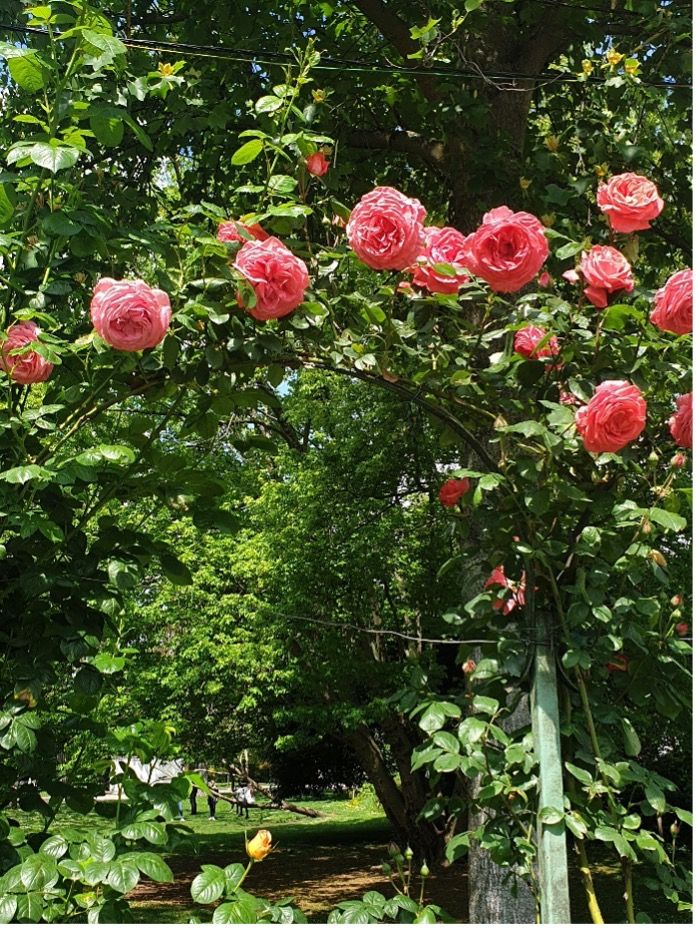
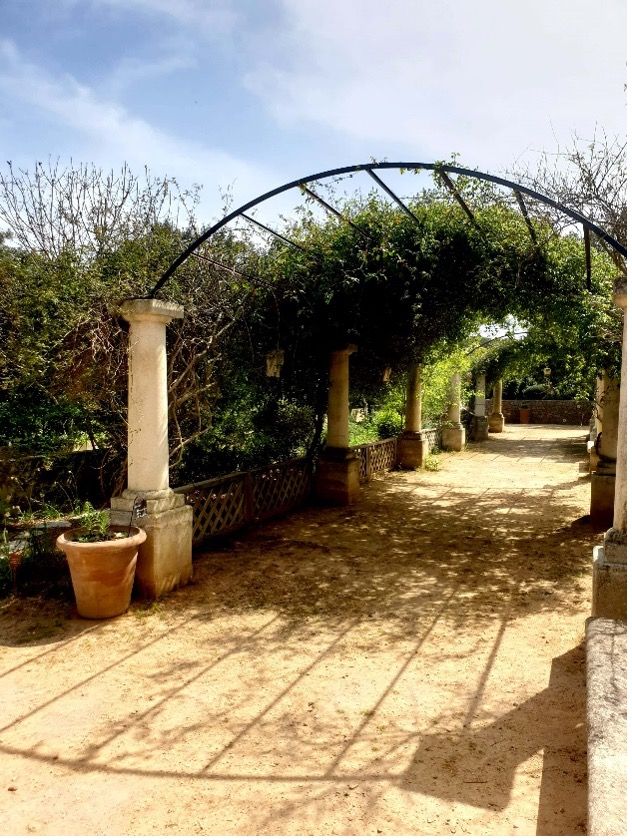
In addition to the Roses, in this Garden there is the Calycanthus of Aphrodite, “the anemone tree”, in reference to the mythological episode of Adonis.



The myrtle was used to adorn the nakedness of Aphrodite when she emerges from the waves of the island of Paphos. It is said that the young girls, the day of their marriage on this island, wear it in crown.
You can also find in the Garden the Hair of Venus, the Comb of Venus, the Mirror of Venus or the edible plant, the Navel of Venus.
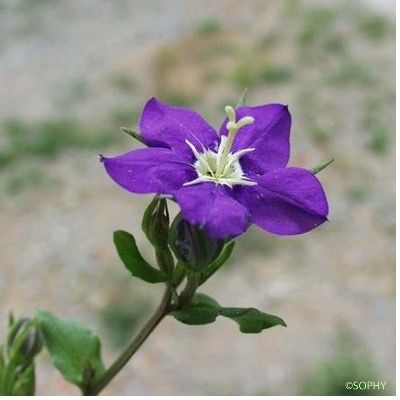

Or the Bathtub of Venus, so called in a very poetic way, because the carderina collects water in its leaves, and this water was considered a water of beauty in ancient times.


Finally, the Venus hoof or Aphrodite’s shoe is a variety of orchid, considered the most beautiful in Europe: the Cypripedium Calceolus (Cypris pedium: foot of Cypris, another name of Venus/Aphrodite).
A Roman legend tells that one day, surprised by a shepherd, Venus wanted to flee and lost a purple and gold shoe. The shepherd, trying to pick it up, saw it disappear under his fingers.

This orchid is a bee trap, but a harmless one: this flower secretes a nectar that attracts the insect and once inside, it has nothing to gather but pollen, and when it comes out, it will spread the seed of this flower so that the flower ensures its reproduction.
Finally, we reach the aromatic square in the Garden of Aphrodite where the verbena, called “Venus grass”, reigns as queen, purifying, brightening and protecting. True “plant of love”, it is used in the incantations of the Witch-Magicians when they call upon Hecate, just like Venus, to make return a disappeared love…
Sappho, Greek poetess, called the Tenth Muse with hair braided with violets, addresses in the poem “Ecstasy” to the Goddess Cypris, in which we find another of her fetish attributes, the apple, and the apple blossom:
“Come to me, Goddess, in this temple of purity. Here, your pleasant bocage of apple trees, and your altars scented with incense.
Clear water murmurs through the branches laden with apple blossoms, the whole area is shaded by fragrant wild roses. The light foliage trembles and makes us slip into an enchanted sleep.
In the meadow, in the nourishing grass, the abundance of the vernal flowers is opened, and the breaths of the wind have the sweetness of honey.
“In this place, yes, you, Goddess Cypris, in the golden cups, as a wine of delight that mingles with our blooming feasts, let the nectar by you be poured.”
Let’s take full advantage of the Taurus Season, of the beautiful month of May, of this entry in the epicurean period of the promising beautiful days, and let’s enjoy the embalmed fragrances of the luminous days that spring offers us…






